The HP Z32k G3 4K USB-C Display is a new 32″ monitor that offers a stunning visual experience using an IPS Black panel that delivers twice the contrast of traditional IPS monitors. This technology is able to produce deeper shadows and richer hues, while maintaining the wide viewing angles IPS panels are known for. With VESA Display HDR 400, a wide 98% P3 color gamut, a built-in KVM switch, and 100W power delivery, the HP Z32k G3 has a lot to offer in one package.
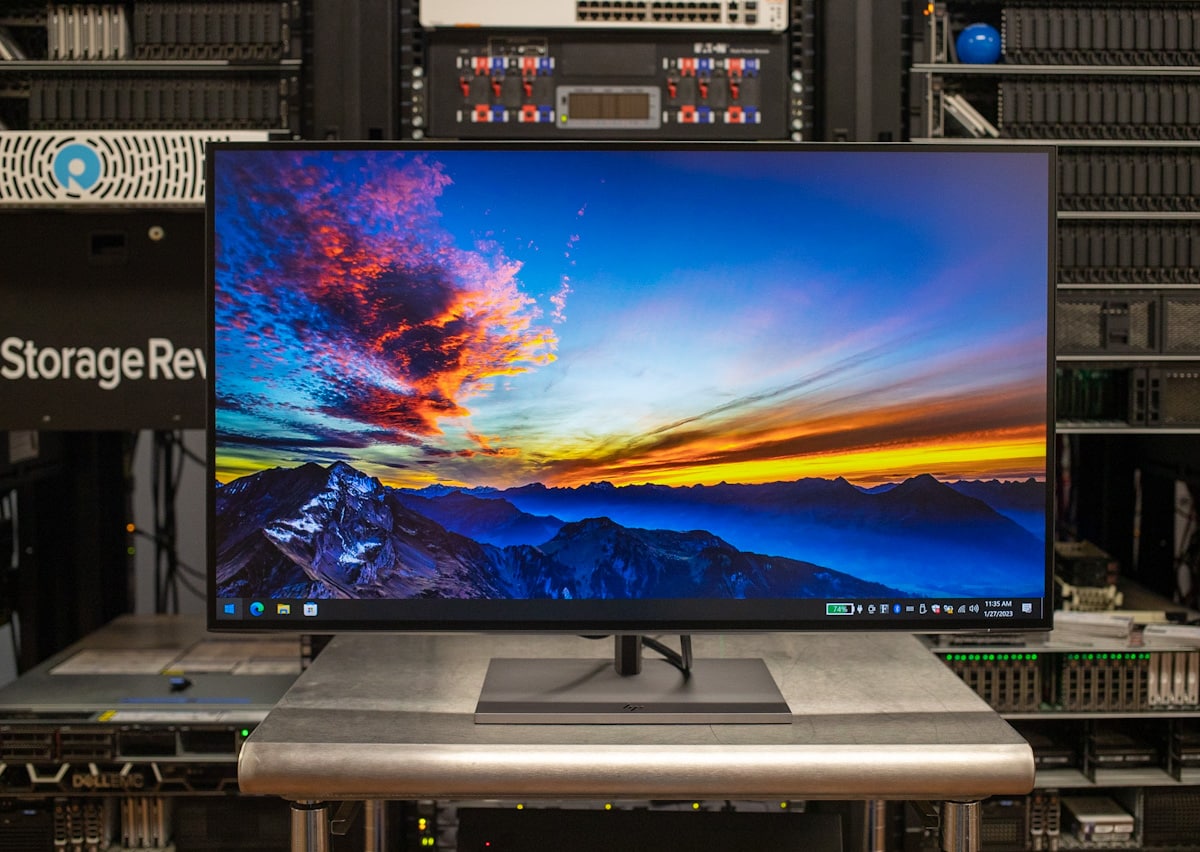
HP Z32k G3
The HP Z32k G3 4K USB-C Display offers an expansive amount of connectivity options. With Thunderbolt 4, users can drive 4K resolution at 60Hz and connect a second 4K monitor using daisy chaining. The capabilities don’t stop there though, as the monitor acts as a central hub of connectivity with its built-in KVM switch. To minimize wiring for multiple systems the monitor has a multitude of USB connectivity onboard, as well as Ethernet for wired networking connectivity.
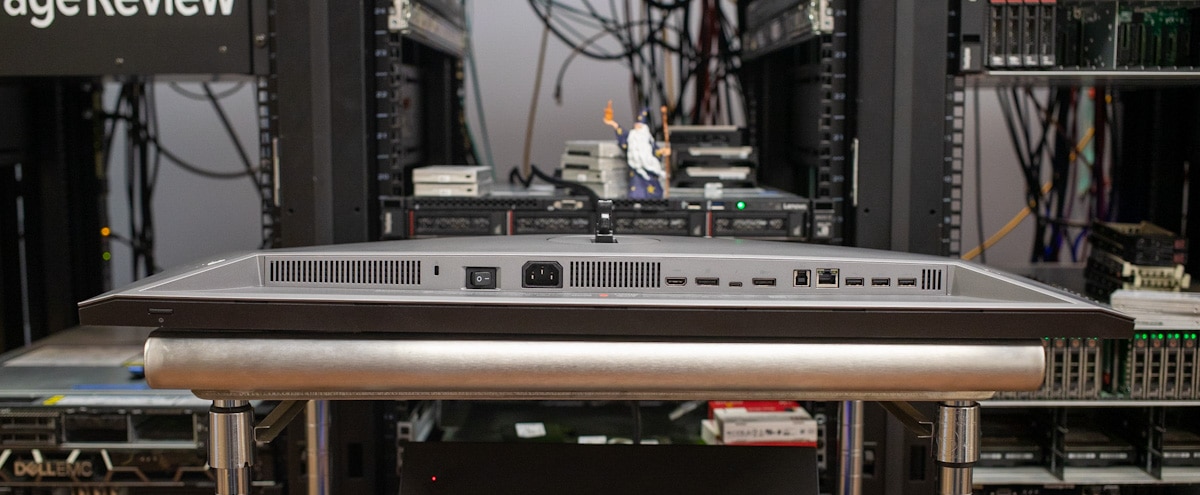
HP Z32k G3 Ports
The HP Z32k G3 4K USB-C Display is designed with user convenience in mind. Its intelligent controls allow users to quickly get to work, and the built-in KVM switch allows for seamless multitasking between two devices using a single keyboard and mouse. Furthermore, the Single Power On feature instantly wakes the display and PC, saving time and effort.
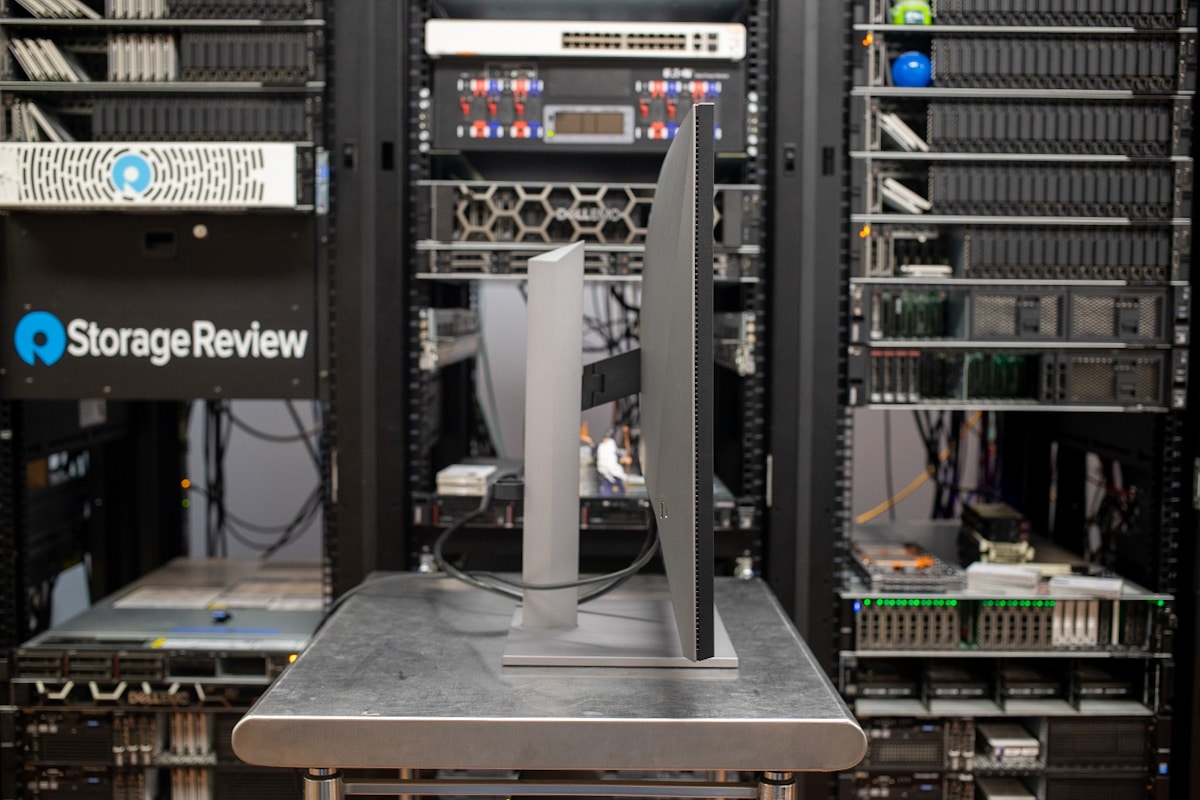
HP Z32k G3 Left Side
In keeping with HP’s commitment to the environment, this display is made with recycled materials. It contains 85% recycled plastics and 5% ocean-bound plastics, and the stand is made with 90% recycled aluminum. By using these materials, HP is able to conserve natural resources, reduce waste, and lower energy consumption.
IPS, VA, OLED or Black IPS
IPS (In-Plane Switching), OLED (Organic Light-Emitting Diode), and VA (Vertical Alignment) are all different technologies used in display panels, such as those found in TVs, computer monitors, and smartphones. The main difference between these technologies is the way that they produce the image on the screen.
IPS display panels use liquid crystals that are aligned in parallel to produce a clear and consistent image. They are known for their wide viewing angles and good color accuracy, making them a popular choice for professional displays.
OLED display panels use organic compounds that emit light when an electric current is applied to them. This allows for individual pixels to be turned on and off, resulting in very deep blacks, high contrast, and fast refresh rates. OLED panels are often used in high-end TVs and smartphones and are at the top of the scale on cost.
VA display panels use liquid crystals that are aligned vertically, allowing for better contrast than IPS panels. They also offer faster response times and are commonly found on gaming monitors.
Black IPS panels build on the qualities of traditional IPS, but are able to offer a deeper black for a deeper contrast level. Where a traditional IPS panel tops out at 1000:1 contrast, the Black IPS panels are able to reach 2000:1. This helps bridge the gap for users wanting a deeper black color, but better color accuracy and viewing angles than what VA displays offer.
HP Z32k G3 4K USB-C Specifications
| Display type | IPS |
| Display size | 80 cm (31.5″) |
| Brightness | 400 nits |
| Contrast ratio | 2000:1, 10,000,000:1 Dynamic |
| Response Ratio | 5ms GtG (with overdrive) |
| Color Gamut | 100% sRGB; 98% DCI-P3 |
| Aspect ratio | 16:9 |
| Native resolution | 4K UHD (3840 x 2160) |
| Resolutions supported | 640 x 480; 720 x 400; 800 x 600; 1024 x 768; 1280 x 720; 1280 x 800; 1280 x 1024; 1440 x 900; 1600 x 900; 1680 x 1050; 1920 x 1080; 1920 x 1200; 2560 x 1440; 3840 x 2160 |
| Display features | On-screen controls; Single Power ON; Anti-glare; Height Adjust/Tilt/Swivel/Pivot; HP Eye Ease; IPS Black |
| User controls | Management; Information; Exit; Input; Color; Image; Power; Menu; Brightness+ |
| Input signal | 1 HDMI 2.0; 4 USB-A 3.2 Gen 1; 1 DisplayPort 1.4-in; 1 DisplayPort 1.4-out; 1 USB Type-C (Alternate mode DisplayPort 1.4, Power Delivery up to 100W), 1 SuperSpeed USB-C 5Gbps /w 15W Power Delivery |
| Networking Connectivity | 1 RJ-45 (10/100/1000 Mbps) |
| Power consumption | 180 W (maximum), 33 W (typical), 0.5 W (standby) |
| Dimensions | 71.35 x 4.7 x 41.59 cm (Without stand.) |
| Weight | 9kg (With stand) |
| Physical security features | Security lock-ready |
| Pixels and panel bit |
|
| Viewing specifications |
|
| Display frequency |
|
| Warranty | 1-year standard |
HP Z32k G3 Design and Build
The HP Z32k G3 is an extremely versatile display as well that offers a wide range of movement options due to its ability to tilt, swivel, and pivot at a range of heights (thanks to its flexible mounting connector). This means you can position the monitor in any way that is comfortable for you, and it will stay securely in place. We found that no matter which position we set the monitor to, it always smoothly and easily moved into place, and remained stable.
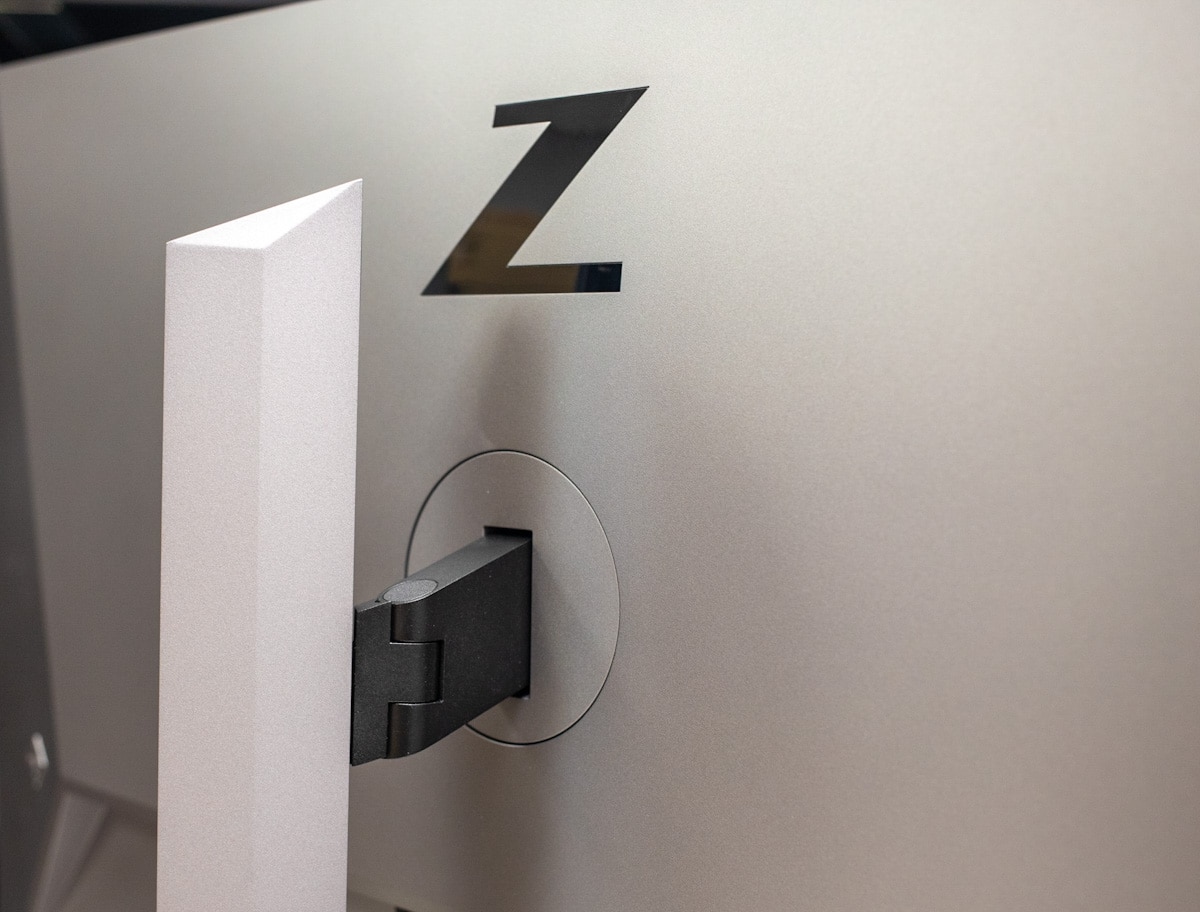
HP Z32k G3 Stand Mount
The HP Z32k G3 also has a wide range of connectivity, all located on the rear side of the monitor. Starting on the left is the joypad OSD button, which is used to both access and navigates the menu system.
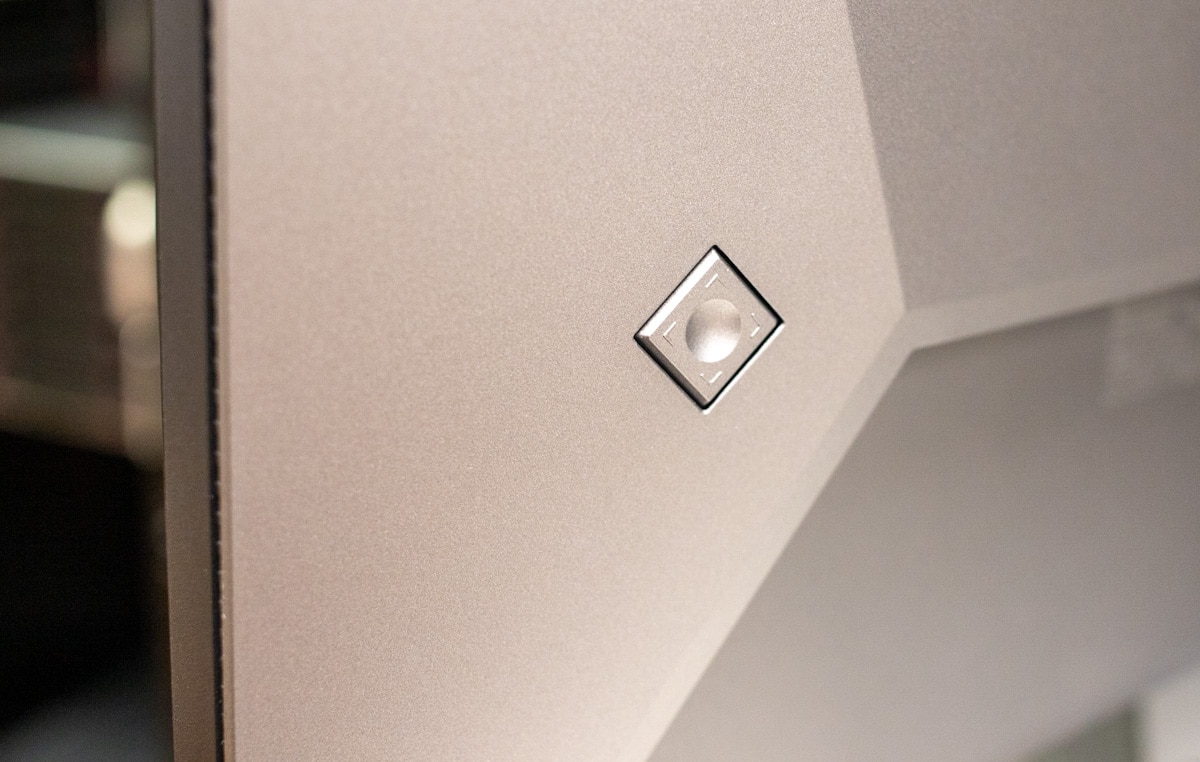
HP Z32k G3 Joypad
Next is the AC power port, an HDMI 2.0 port, two DisplayPort 1.4 ports (one of which is used as an “out” port for the KVM functionality), a Thunderbolt 4 port, an RJ-45 port, and three USB-A ports. It also features a USB-B port, which is often used for connecting peripherals such as keyboards, mice, and external hard drives and also for firmware updates and control.
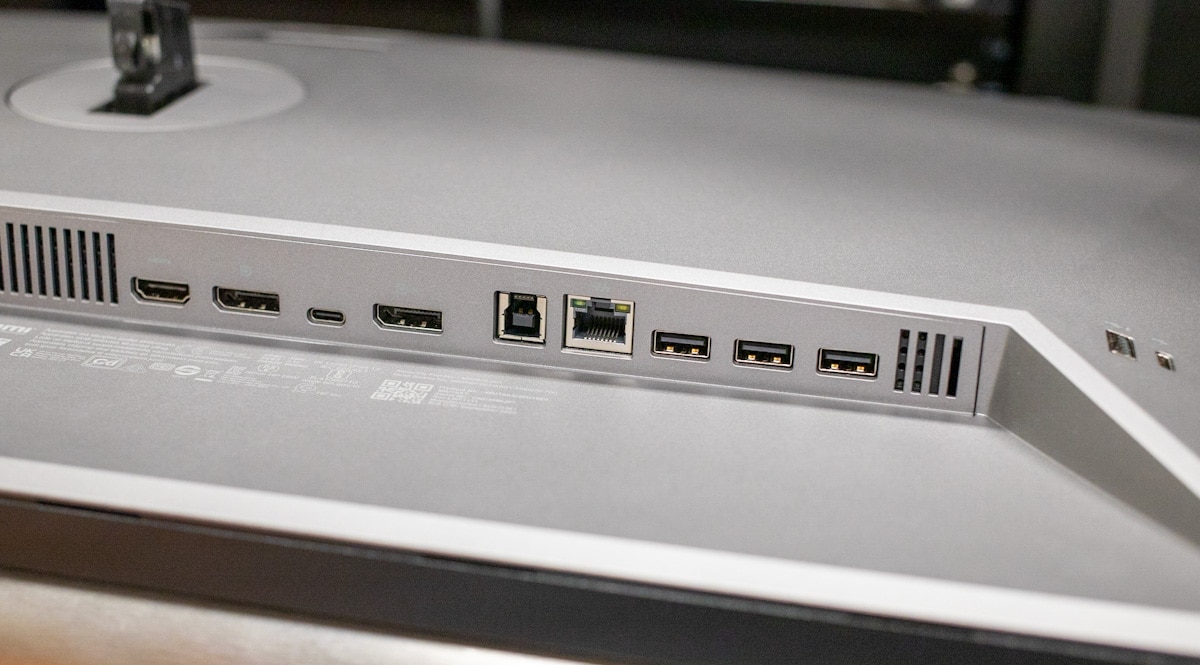
HP Z32k G3 Ports Detail
On the right side is another USB-A port and a USB-C port.
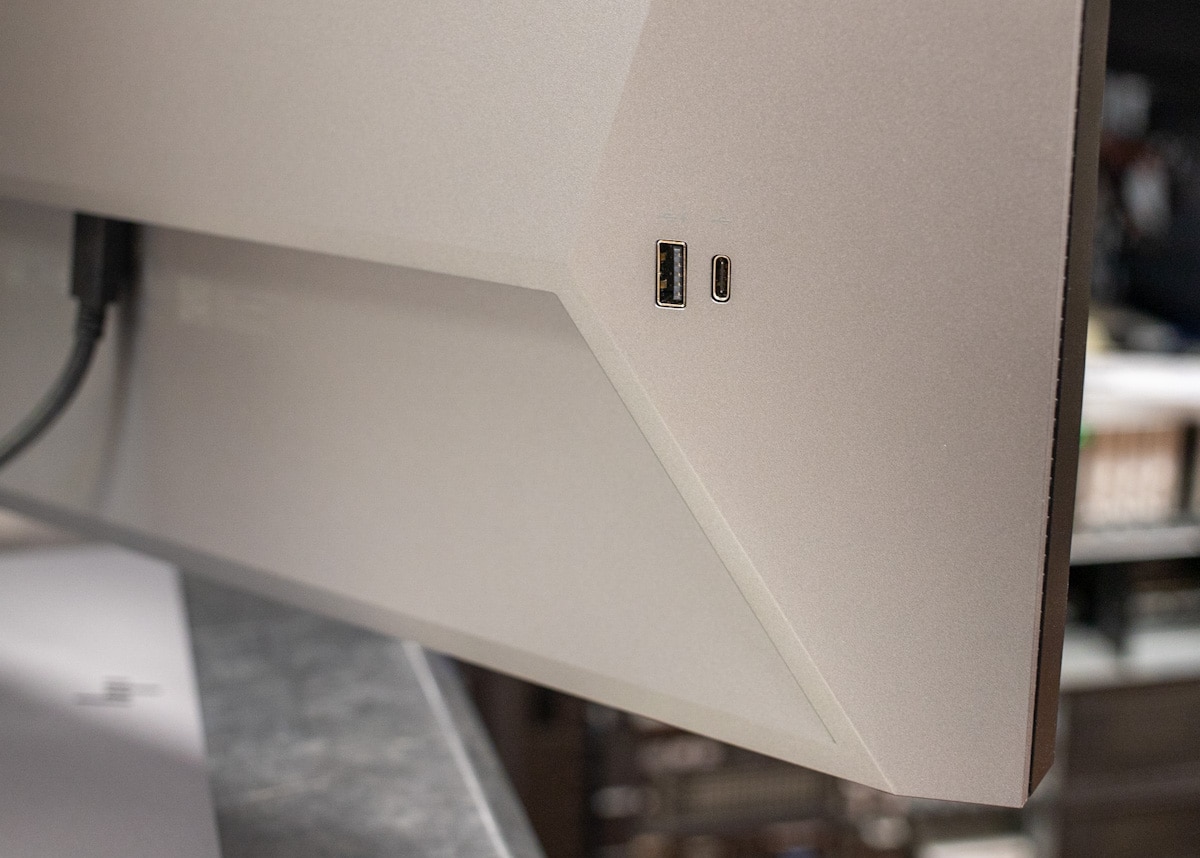
HP Z32k G3 Secondary Ports
HP Z32k G3 in Use
Achieving a clean and organized workspace with multiple systems can be difficult, especially when it comes to dealing with the plethora of wires and cables that are necessary to connect everything. One way to approach this problem is through the use of a docking station and a KVM switch. The HP Z32k G3 does both of these together, making it a pretty interesting display solution on the market.
A built-in KVM (Keyboard, Video, Mouse) switch allows you to control multiple computers with just a single keyboard and mouse, eliminating the need to physically change cables or peripherals. This will reduce significant cord clutter and allow you to work on multiple computers at the same time, without having to constantly switch between keyboards and mice while eliminating the need for an additional peripheral device (saving the space on your desk). All of this makes it particularly useful for professionals who work with multiple computers simultaneously, or for IT professionals who manage and troubleshoot multiple servers.
KVM traditionally works via a button on the monitor or a hotkey on the keyboard as a separate device; however, this functionality comes built-in and is accessed via the monitor’s OSD.
Simply use a DisplayPort or HDMI cable and connect one end to the appropriate connector on the monitor, and the other end to the corresponding connector on the second computer. If you want to use a USB connection, it supports USB Type-B to Type-A cable; the monitor will automatically switch to the Thunderbolt input for both video and USB data when connected, and back to the active input (DisplayPort or HDMI) when disconnected. All of this worked seamlessly when we tested it on two laptops.
If two operating computers are connected to the monitor, the KVM function can be easily switched by pressing the on-screen display (OSD) “Next Input” button.
The OSD itself is fast and easy to use, and allowed us to easily adjust settings and customize the display based on our own preferences (all the usual suspects and more). To access the OSD, simply press the small joypad on the rear right side of the monitor.
The OSD includes the following options:
- Brightness+: Allows you to adjust the brightness level of the screen.
- Color: Provides a variety of presets to configure the monitor for different viewing situations.
- Input: Select the video input signal from Thunderbolt USB Type-C, DisplayPort, or HDMI.
- Image: Adjusts the screen image, including response time, sharpness, and image scaling.
- Power: Adjust the power settings.
- Menu: Allows you to adjust the OSD menu, function button controls, and languages.
- Management: Returns all OSD menu settings to the factory default settings.
- Information: Shows information about the monitor such as optimal display mode, power mode, and serial number.
Conclusion
The HP Z32k G3 4K USB-C Display is a versatile monitor that offers a nice visual experience with its IPS Black panel. During testing, we found that this produced deeper shadows and richer hues while maintaining the wide viewing angles that IPS panels are known for. With VESA Display HDR 400, a wide 98% P3 color gamut, a built-in KVM switch, and 100W power delivery, the HP Z32k G3 has a lot to offer for a wide range of use cases.
The HP Z32k G3 4K also is outfitted with an expansive amount of connectivity options. With Thunderbolt 4, users can drive 4K resolution at 60Hz and connect a second 4K monitor using daisy chaining. The monitor also acts as a central hub of connectivity with its built-in KVM switch, which allows users to seamlessly multitask between two devices using a single keyboard and mouse. Additionally, the monitor has a multitude of USB connectivity options and Ethernet for wired networking connectivity.
Overall, it’s quite clear that this monitor is designed with user convenience in mind. Its intelligent controls allow users to quickly get to work, and the built-in KVM switch allows for seamless multitasking between two devices using a single keyboard and mouse. In addition, the Single Power On feature instantly wakes the display and PC, saving time and effort while its build is made with recycled materials and is compliant with HP’s commitment to the environment.
The monitor is available now through HP for $839 at the time of this review, though out of stock, and $845 at Amazon.




 Amazon
Amazon